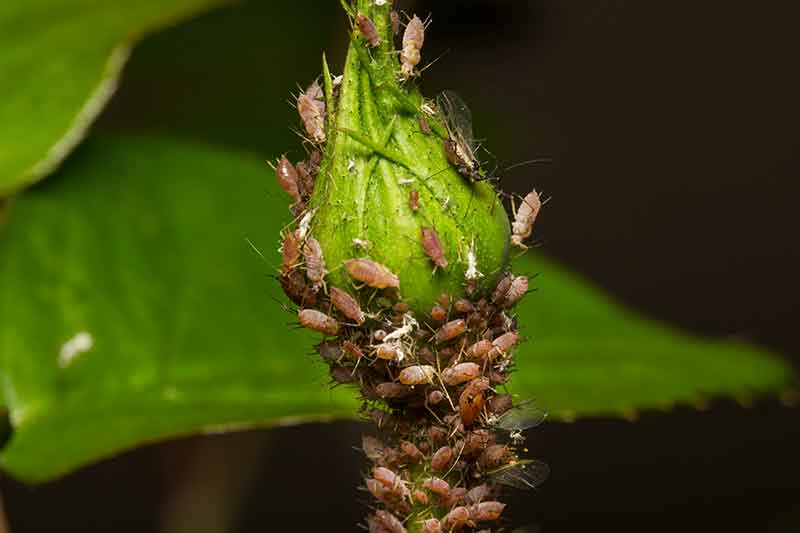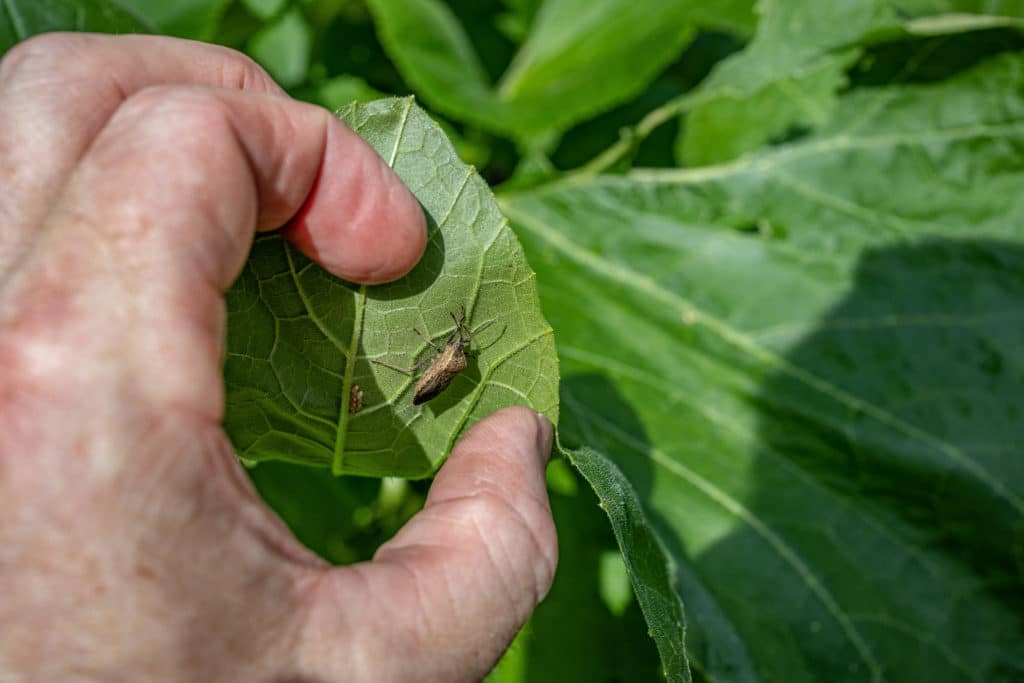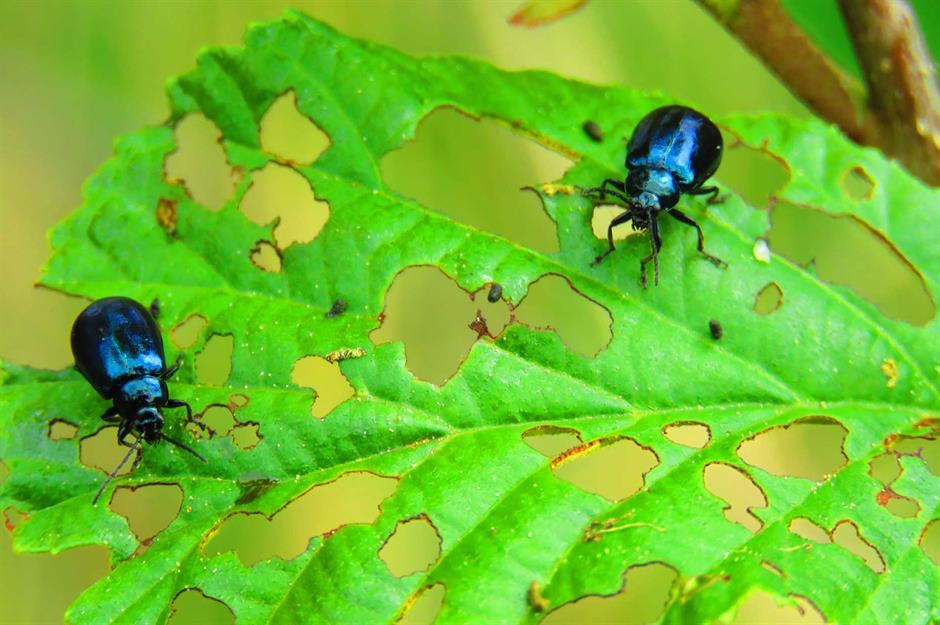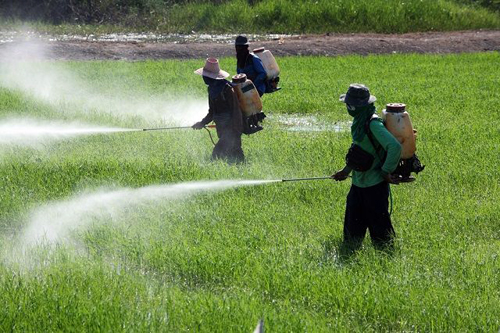Identifying Common Pests: The First Step to Eradication
Accurate identification of the type of pest infesting your plants is crucial to developing an effective pest control strategy. Common pests that can wreak havoc on your garden include aphids, whiteflies, spider mites, mealybugs, and scale. These pests can cause significant damage, leading to stunted growth, yellowing leaves, and reduced yields. To recognize the signs of pest infestation, regularly inspect your plants, looking for unusual marks, holes, or discoloration on leaves and stems. Check for actual pests, such as eggs, larvae, or adult insects, on the underside of leaves or on stems. Be aware of any unusual odors or sticky substances on your plants, as these can indicate pest activity. Knowing how to get rid of pests on plants starts with accurate identification, as it allows you to target the pest correctly and avoid using ineffective or even harmful treatments. By understanding the type of pest you’re dealing with, you can develop a targeted strategy to get rid of pests on plants and prevent further damage. For instance, if you identify aphids as the pest, you can use neem oil or insecticidal soap to control their population. Regular monitoring and identification can help you stay one step ahead of pests and ensure a thriving garden. Remember, identifying the pest is the first step to eradicating them and maintaining a healthy garden. By learning how to get rid of pests on plants, you can take proactive measures to prevent infestations and ensure a healthy and productive garden. Regularly inspecting your plants and identifying pests early on can help you avoid costly and time-consuming treatments, and instead, focus on nurturing a healthy and thriving garden. This proactive approach can save you time, money, and effort in the long run, and ensure a bountiful harvest.
Organic Pest Control Methods: A Safe and Sustainable Approach
When it comes to getting rid of pests on plants, organic pest control methods are a safe and sustainable approach. These methods not only protect the environment but also ensure human health and safety. One of the most effective organic pest control methods is the use of neem oil. Neem oil is derived from the seeds of the neem tree and is a natural insecticide that can be used to control a wide range of pests, including aphids, whiteflies, and spider mites. It works by disrupting the hormone system of insects, preventing them from reproducing and eventually killing them. Another organic pest control method is the use of insecticidal soap. Insecticidal soap is a mild pesticide that is derived from the fatty acids of plants. It works by breaking down the insect’s exoskeleton, causing them to dehydrate and die. Horticultural oil is another effective organic pest control method. Horticultural oil is a refined mineral oil that is used to control pests such as aphids, mealybugs, and spider mites. It works by suffocating the insects, causing them to die. Organic pest control methods are not only effective but also environmentally friendly. They do not contaminate soil, water, or air, and they do not harm beneficial insects such as bees and butterflies. By using organic pest control methods, you can ensure a healthy and thriving garden while also protecting the environment. Remember, how to get rid of pests on plants starts with using safe and sustainable methods that do not harm the environment or human health. By incorporating organic pest control methods into your gardening practices, you can create a balanced ecosystem that is free from pests and diseases.
How to Use Physical Barriers to Keep Pests at Bay
Physical barriers are a simple yet effective way to prevent pests from reaching your plants. By blocking pests from accessing your plants, you can significantly reduce the risk of infestation and how to get rid of pests on plants becomes much easier. Fine-mesh screens and fine-netted row covers are two common types of physical barriers that can be used to keep pests at bay. Fine-mesh screens can be placed around individual plants or entire beds to prevent pests like whiteflies and aphids from landing on the plants. Fine-netted row covers, on the other hand, can be used to cover entire rows of plants, preventing pests like cabbage moths and carrot flies from laying their eggs on the plants. To install physical barriers, simply place the screen or row cover over the plant or bed, securing it with stakes or weights to prevent it from blowing away. Regularly inspect the barriers to ensure they are in good condition and replace them as needed. By using physical barriers, you can create a pest-free zone around your plants, reducing the need for pesticides and other chemicals. This method is especially effective for plants that are particularly susceptible to pest damage, such as tomatoes and cucumbers. By combining physical barriers with other pest control methods, such as organic pest control methods and cultural controls, you can create a comprehensive pest management strategy that will keep your garden healthy and thriving.
Cultural Controls: Modifying Your Gardening Practices to Discourage Pests
Cultural controls are an essential part of any pest management strategy, and can be used in conjunction with other methods to create a comprehensive approach to how to get rid of pests on plants. By modifying your gardening practices, you can create an environment that discourages pest infestation and promotes healthy plant growth. One of the most effective cultural controls is adjusting your watering schedule. Overwatering can attract pests and create an ideal environment for them to thrive. By watering your plants in the morning, allowing the soil to dry slightly between waterings, and avoiding getting water on the leaves, you can reduce the risk of pest infestation. Pruning is another important cultural control. By removing infested or damaged leaves and stems, you can prevent pests from spreading and reduce the risk of further infestation. Crop rotation is also a key cultural control. By rotating your crops, you can break the life cycle of pests and reduce the risk of infestation. For example, rotating from a crop that is susceptible to aphids to one that is not can help reduce the risk of aphid infestation. Additionally, maintaining a clean garden by removing weeds and debris can also help reduce the risk of pest infestation. By incorporating these cultural controls into your gardening practices, you can create a healthy and balanced ecosystem that is less susceptible to pest problems. This approach can be used in conjunction with other methods, such as organic pest control methods and physical barriers, to create a comprehensive pest management strategy that will keep your garden healthy and thriving.
Biological Pest Control: Encouraging Natural Predators and Parasites
Biological pest control is a highly effective and environmentally friendly way to get rid of pests on plants. This method involves introducing natural predators and parasites that feed on pests, reducing their populations and preventing infestation. One of the most popular biological pest control methods is the use of ladybugs, which feed on aphids, whiteflies, and other soft-bodied pests. Lacewings are another natural predator that can be used to control pest populations, and they are particularly effective against aphids, spider mites, and caterpillars. Parasitic wasps, such as Trichogramma, are also used to control pest populations by laying their eggs inside the eggs of pests, preventing them from hatching. To use biological pest control methods, simply release the natural predators or parasites into your garden, making sure to follow the instructions provided by the supplier. It’s essential to create a welcoming environment for these beneficial insects by providing them with food, shelter, and water. By encouraging natural predators and parasites, you can create a balanced ecosystem that is less susceptible to pest problems. This approach can be used in conjunction with other methods, such as organic pest control methods and physical barriers, to create a comprehensive pest management strategy that will keep your garden healthy and thriving. By incorporating biological pest control into your gardening practices, you can reduce your reliance on chemical pesticides and create a more sustainable and environmentally friendly approach to how to get rid of pests on plants.
Chemical Pest Control: When to Use Insecticides and How to Choose the Right One
While organic and biological pest control methods are always the preferred choice, there may be situations where chemical pest control methods are necessary. Chemical pest control involves the use of insecticides to kill pests, and should only be used as a last resort when other methods have failed. When deciding to use chemical pest control, it’s essential to choose the right insecticide for the job. Look for insecticides that are specifically labeled for the type of pest you’re trying to control, and always follow the instructions on the label. It’s also important to consider the potential risks to human health and the environment when using chemical pest control methods. Some insecticides can be toxic to beneficial insects, such as bees, and can contaminate soil and water. To minimize these risks, use insecticides only when necessary, and always follow integrated pest management (IPM) practices. IPM involves using a combination of pest control methods, including cultural, biological, and chemical controls, to manage pest populations in a sustainable way. By using IPM practices, you can reduce your reliance on chemical pest control methods and create a more balanced ecosystem that is less susceptible to pest problems. Remember, chemical pest control should always be a last resort, and should only be used when other methods have failed to get rid of pests on plants.
Monitoring and Maintaining a Pest-Free Garden
Regular monitoring is crucial to maintaining a pest-free garden. By regularly inspecting your plants, you can catch pest infestations early, before they cause significant damage. Check your plants at least once a week, looking for signs of pest infestation such as holes in leaves, white powdery residue, or actual pests on the plants. Use a hand lens or magnifying glass to get a closer look at any suspicious areas. Monitor your plants more frequently during peak pest seasons, such as during warm weather or when plants are in bloom. In addition to monitoring, maintain a pest-free garden through ongoing cultural and biological controls. Continue to use organic pest control methods, such as neem oil and insecticidal soap, as needed. Also, maintain a healthy soil ecosystem by adding organic matter and using compost tea. By regularly monitoring your plants and maintaining a healthy garden ecosystem, you can prevent pest problems and keep your garden thriving. Remember, the key to getting rid of pests on plants is to be proactive and take action early. By monitoring your plants regularly and using a combination of pest control methods, you can create a balanced ecosystem that is less susceptible to pest problems.
Preventing Re-Infestation: Long-Term Strategies for a Healthy Garden
To prevent re-infestation and maintain a healthy garden, it’s essential to implement long-term strategies that promote a balanced ecosystem. One key approach is to maintain a healthy soil ecosystem by adding organic matter, using compost tea, and incorporating cover crops. This will help to create a diverse and resilient soil food web that can withstand pest pressures. Another strategy is to use resistant plant varieties that are bred to be less susceptible to pest infestation. This can be especially effective for plants that are commonly affected by pests, such as tomatoes and peppers. Implementing integrated pest management (IPM) practices is also crucial for preventing re-infestation. IPM involves using a combination of pest control methods, including cultural, biological, and chemical controls, to manage pest populations in a sustainable way. By using IPM practices, you can reduce your reliance on chemical pest control methods and create a more balanced ecosystem that is less susceptible to pest problems. Additionally, consider incorporating beneficial insects, such as ladybugs and lacewings, into your garden to help control pest populations naturally. By implementing these long-term strategies, you can prevent re-infestation and maintain a healthy, thriving garden. Remember, getting rid of pests on plants requires a comprehensive approach that addresses the root causes of pest infestation. By taking a proactive and holistic approach to pest control, you can create a garden that is resilient to pest problems and requires minimal intervention.






